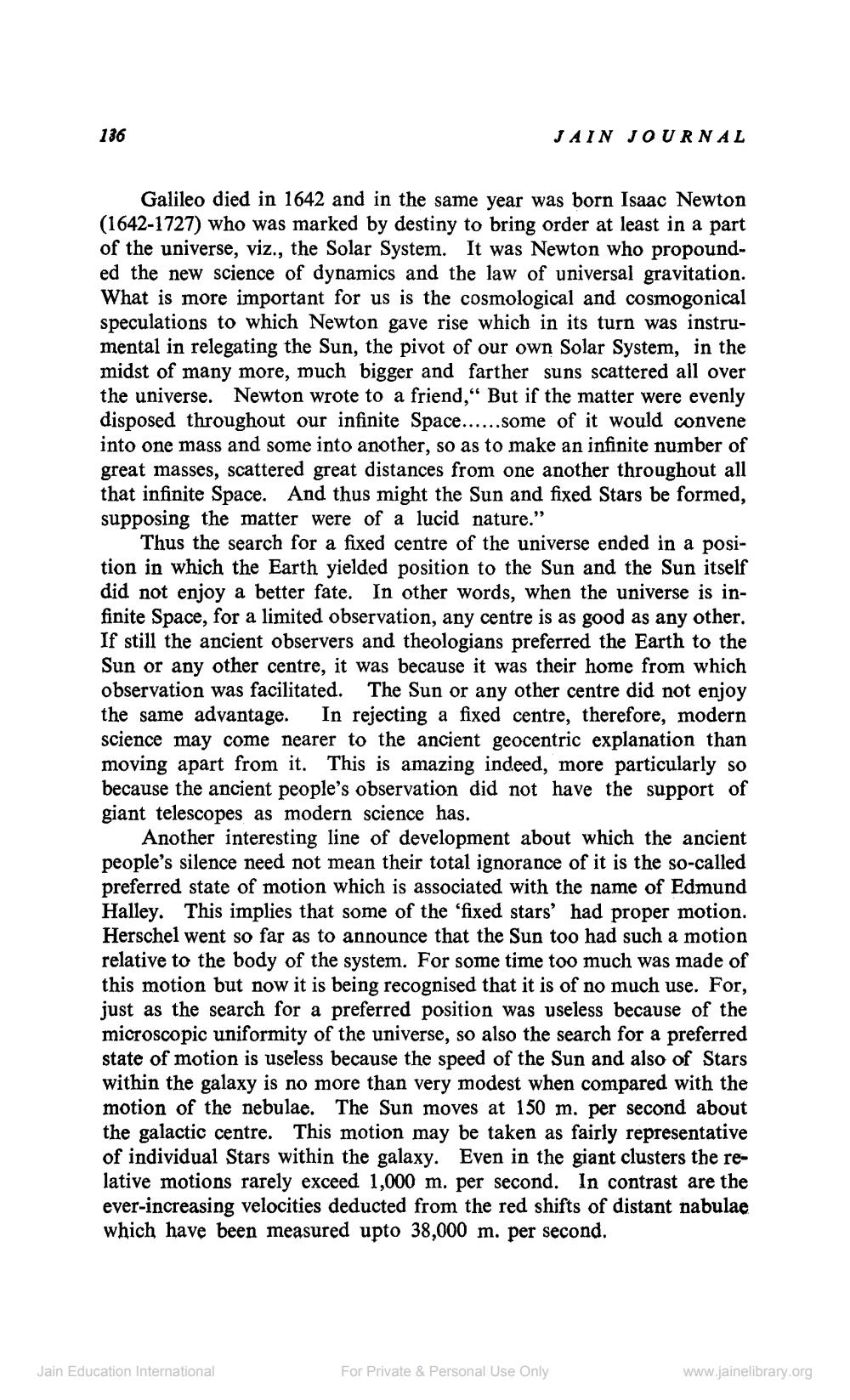________________
136
JAIN JOURNAL
Galileo died in 1642 and in the same year was born Isaac Newton (1642-1727) who was marked by destiny to bring order at least in a part of the universe, viz., the Solar System. It was Newton who propounded the new science of dynamics and the law of universal gravitation. What is more important for us is the cosmological and cosmogonical speculations to which Newton gave rise which in its turn was instrumental in relegating the Sun, the pivot of our own Solar System, in the midst of many more, much bigger and farther suns scattered all over the universe. Newton wrote to a friend," But if the matter were evenly disposed throughout our infinite Space......some of it would convene into one mass and some into another, so as to make an infinite number of great masses, scattered great distances from one another throughout all that infinite Space. And thus might the Sun and fixed Stars be formed, supposing the matter were of a lucid nature."
Thus the search for a fixed centre of the universe ended in a position in which the Earth yielded position to the Sun and the Sun itself did not enjoy a better fate. In other words, when the universe is infinite Space, for a limited observation, any centre is as good as any other. If still the ancient observers and theologians preferred the Earth to the Sun or any other centre, it was because it was their home from which observation was facilitated. The Sun or any other centre did not enjoy the same advantage. In rejecting a fixed centre, therefore, modern science may come nearer to the ancient geocentric explanation than moving apart from it. This is amazing indeed, more particularly so because the ancient people's observation did not have the support of giant telescopes as modern science has.
Another interesting line of development about which the ancient people's silence need not mean their total ignorance of it is the so-called preferred state of motion which is associated with the name of Edmund Halley. This implies that some of the 'fixed stars' had proper motion. Herschel went so far as to announce that the Sun too had such a motion relative to the body of the system. For some time too much was made of this motion but now it is being recognised that it is of no much use. For, just as the search for a preferred position was useless because of the microscopic uniformity of the universe, so also the search for a preferred state of motion is useless because the speed of the Sun and also of Stars within the galaxy is no more than very modest when compared with the motion of the nebulae. The Sun moves at 150 m. per second about the galactic centre. This motion may be taken as fairly representative of individual Stars within the galaxy. Even in the giant clusters the relative motions rarely exceed 1,000 m. per second. In contrast are the ever-increasing velocities deducted from the red shifts of distant nabulae which have been measured upto 38,000 m. per second.
Jain Education International
For Private & Personal Use Only
www.jainelibrary.org




